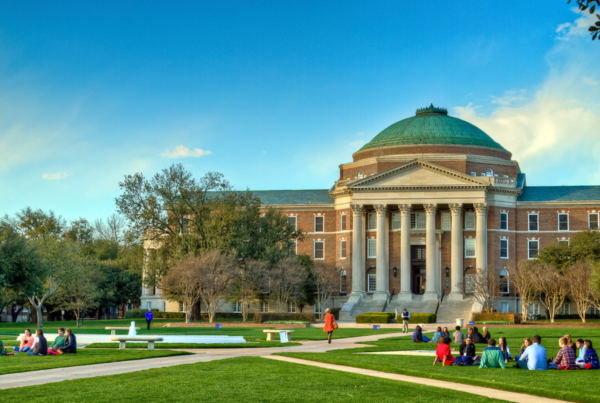Research universities versus liberal arts colleges: What is the difference?
As students began thinking about the colleges that they plan to visit and/or apply to, they may hear terms like “liberal arts colleges” and “research university” being thrown around. Colleges and universities are often proud of their status as one or the other, and both offer benefits for college students (though students may find they distinctly prefer one or another).
While these terms are often invoked to speak of the colleges, students (and their parents) might be unsure about what such terms mean. Read on for a better understanding of liberal arts colleges and research universities to help students figure out which offers the best fit for them!
Liberal Arts Colleges
1. Liberal arts colleges tend to be smaller than research universities.
Since they are smaller, students will often come across people they know walking around campus and the town where the college is located. These schools place special emphasis on undergraduate learning, and undergraduates are often the only students that professors teach. As a rule, liberal arts colleges do not have graduate programs, though there are some exceptions.
2. The ratio of faculty-to-student is generally low.
This means the faculty are able to teach their courses without the aid of graduate students, so students usually have more contact with their professors. Because these colleges have fewer students and there is less emphasis on faculty research production than at large research universities, professors can devote more personalized attention to their students.
3. Liberal arts colleges tend to focus on a well-rounded general education.
Liberal arts colleges emphasize critical thinking and writing skills; they strive to help students think about topics from an interdisciplinary perspective. Liberal arts colleges usually have fewer options for majors, courses and programs. These colleges usually don’t have professional degree majors (for example, accounting, nursing. or engineering).
Students at liberal arts colleges, however, can later attend graduate schools to get their professional degrees. That doesn’t mean that students who graduate from a liberal arts school will be at a disadvantage if they decide they want to go to pursue a professional degree later. While a liberal arts school may not offer pre-med or pre-law options, for example, students can major in biology or political science, which will prepare a student to apply to professional schools.
Research Universities
4. Research universities are large schools dedicated to education and producing knowledge through the research that professors conduct.
They tend to educate a wider range of students, including graduate and professional students as well as undergrads. As such, research universities offer a wider variety of courses, majors, pre-professional tracks and other special programs that might not be available at liberal arts colleges. Students can have the freedom to explore an array of subjects before committing to a major (But be sure to look at the college offerings to know what each specific school does and does not offer).
Since they offer more types of degrees, these schools also have more subdivisions (i.e., college of liberal arts, law school, business school, medical school, etc.) and tend to have more diverse populations of students. Actual size varies, but can range from thousands of students to thirty thousand or more students.
5. Courses are offered in both large lectures and seminars.
Seminars are generally available to upperclassmen (check at the specific schools to know what the school offers exactly). Professors may deliver their lectures to classes of hundreds of students. Lectures usually have mandatory discussion sections or labs, which are much smaller (around 20-25 students per section) and are often led by grad students in the field. As students advance in their education, they will be able to take more specialized courses, which are usually much smaller than introductory or general education courses. Students may also be eligible to take graduate-level course work at some point in their undergraduate careers, if they so choose.
6. In addition to teaching, professors also conduct their own research and teach and mentor their advanced-degree students.
The research faculty conduct at these universities is cutting-edge, and their findings often shape new ideas and innovative technology. Students at research universities are able to learn from leading experts in their fields, and perhaps even work with them on research (ask about it on college visits!).
Do undergrads get lost in the shuffle at research universities?
It is important to note that undergrads are not neglected at research universities. When we say that liberal arts colleges are dedicated to undergraduates, we don’t mean to say that undergrads are ignored at research universities. Students may, however, have to show more initiative.
Research universities generally offer different programs for undergraduates that can be very similar to those of a liberal arts college (such as honors colleges, freshman interest groups, and other learning communities) if students want to participate in them. Students should ask about such offerings on their college visits if they want to find out more (we’ll be discussing these programs more soon in another blog entry.)
If students want closer relationships with their professors, all professors have office hours and undergrads can speak directly with them by signing up. In addition, graduate student instructors/TAs are often less experienced than professors, but they are usually dedicated and knowledgeable as well. In sum, at research universities students may have to seek out their professors in order to form relationships with them, but the efforts are usually rewarded.





